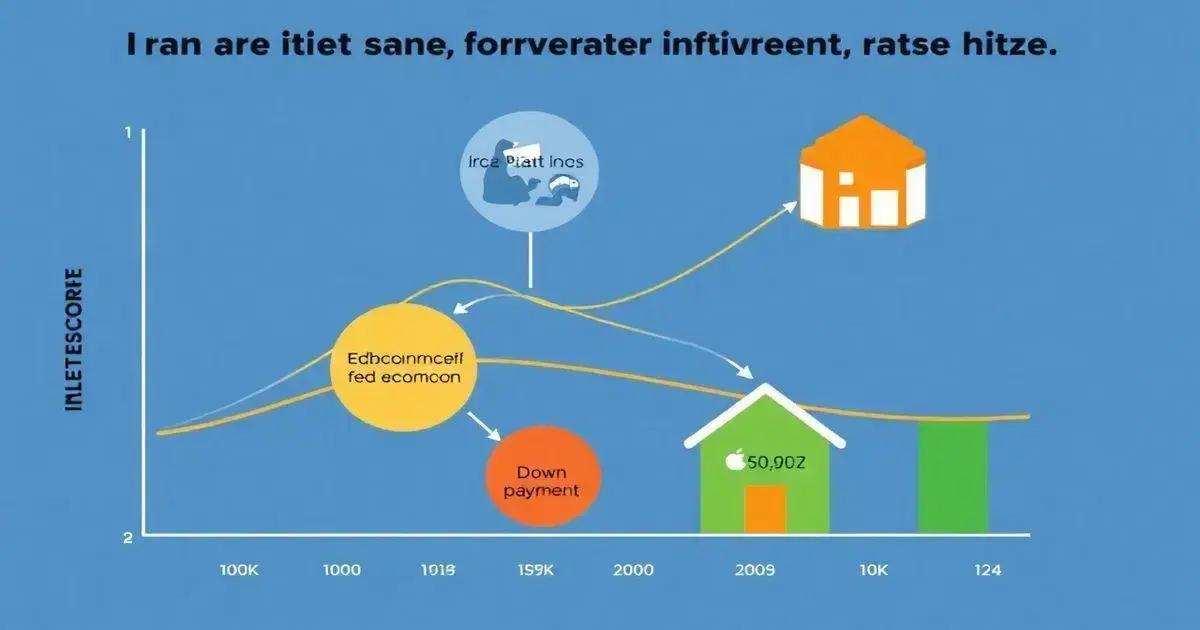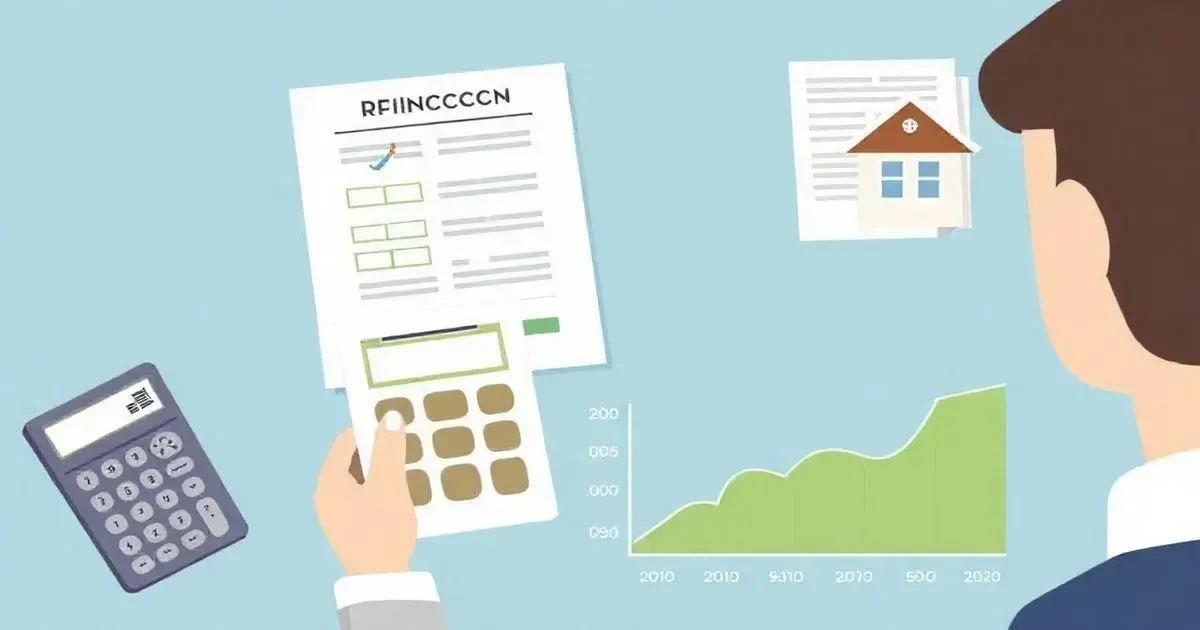Loan interest rates play a crucial role in determining how much you will pay when borrowing money. These rates vary based on factors such as credit score, loan type, and overall economic conditions, directly impacting your financial commitments.
Understanding the different types of loan interest rates and how they work can help you make better financial decisions. Comparing offers from various lenders and knowing the right time to refinance can lead to significant savings over time.
If you want to secure the best terms and reduce borrowing costs, it’s essential to stay informed about loan interest rates. Keep reading to discover practical tips and strategies to make the most of your financial opportunities.
Understanding Loan Interest Rates
Understanding loan interest rates is crucial for anyone considering borrowing money. These rates determine how much you’ll pay back over time, making it essential to grasp their fundamentals. Loan interest rates are expressed as a percentage of the borrowed amount, which can vary based on several factors.
What are Loan Interest Rates?
Loan interest rates represent the cost of borrowing money. They can be either fixed or variable. A fixed rate remains the same throughout the loan term, which means your payments won’t change. On the other hand, a variable rate can fluctuate based on the market, potentially leading to lower or higher payments over time.
The Role of Lenders
Lenders set interest rates based on their risk assessment of borrowers. When evaluating your application, they consider factors like credit history, income, and debt-to-income ratio. A higher perceived risk may result in a higher interest rate, while a lower risk could lead to lower rates.
The Importance of Timing
The timing of your loan application can also influence the interest rates. Rates change frequently due to market conditions and economic factors. Monitoring trends can help you borrow at a time when rates are favourable.
Economic Indicators
Understanding economic indicators like inflation rates, employment statistics, and central bank policies is crucial. These factors can impact interest rates at large. For example, when inflation rises, lenders may increase rates to maintain profit margins.
Loan Type Impact
Different types of loans have varying interest rates. For instance, home loans often have lower rates than personal loans due to collateral backing the former. Business loans might also attract different rates based on the perceived risk involved.
Importance of Comparison
It’s wise to compare different lenders and their rates. Use online tools and calculators to analyse your potential payments based on various rates. By understanding how different factors impact loan interest rates, you can make more informed borrowing decisions.
Factors Affecting Loan Interest Rates

Several factors can influence loan interest rates. Understanding these can help borrowers make better decisions when seeking loans. Here are some of the main factors:
1. Credit Score
Your credit score is one of the most important factors that lenders consider. A higher credit score indicates to lenders that you are a low-risk borrower and can lead to lower interest rates. Conversely, a lower credit score often results in higher rates due to increased risk.
2. Economic Conditions
The general state of the economy plays a significant role in determining loan interest rates. In times of economic growth, rates may rise due to increased demand for borrowing. During economic downturns, rates might be lowered to stimulate lending.
3. Inflation
Inflation affects the purchasing power of money. When inflation rates are high, lenders typically increase interest rates to maintain their profit margins and to offset the declining value of future repayments.
4. Loan Type
The type of loan you are applying for can impact the interest rate offered. Secured loans often have lower rates than unsecured loans because they are backed by collateral, reducing risk for the lender.
5. Loan Term
Loan terms, or the length of time you are borrowing the money, can affect interest rates. Shorter-term loans usually have lower interest rates compared to longer-term loans because they represent less risk.
6. Lender’s Policies
Different lenders have different policies and criteria for setting interest rates. This means that rates can vary significantly between institutions, so it’s important to shop around.
7. Down Payment
The size of your down payment can influence the interest rate. A larger down payment reduces the lender’s risk, which may lead to lower interest rates. Conversely, a smaller down payment may mean higher rates.
By understanding these factors, you can better navigate the complexities involved in securing a loan and potentially save money over the life of the loan.
Types of Loan Interest Rates
When considering loans, it’s important to understand the different types of loan interest rates available. Each type has its own characteristics and can affect how much you pay over time. Here are the main types:
1. Fixed Interest Rates
A fixed interest rate remains constant throughout the loan term. This means that your monthly payments will not change, which makes it easier to budget. Fixed rates are generally preferred for long-term loans like mortgages.
2. Variable Interest Rates
Variable interest rates, also known as adjustable rates, fluctuate with market conditions. This means your payments may change over time based on the current interest rate environment. While this type may start lower than fixed rates, they can increase, leading to higher costs in the long run.
3. Introductory (Teaser) Rates
Some loans offer an introductory rate, which is a lower rate for a limited period at the start of the loan. After the introductory phase, the interest rate typically increases. Borrowers must be aware of the future cost and plan accordingly.
4. Interest-Only Loans
With interest-only loans, borrowers pay only the interest for a specified period. After this period, they must start repaying the principal along with interest. This type can be beneficial initially but may lead to much higher payments later.
5. Discounted Rate Loans
A discounted rate loan offers a reduced interest rate for a particular timeframe. Similar to introductory rates, the rate increases after the discount period ends, so understanding the full term is crucial.
6. Hybrid Loan Rates
Hybrid loans combine both fixed and variable rates. These loans typically have a fixed rate for an initial period, after which they adjust to a variable rate. This can provide stability initially while allowing for potential savings if rates decrease later.
Understanding these different types of loan interest rates can help you make informed decisions. Each option has its benefits and drawbacks, and knowing which suits your situation best is key to effective financial planning.
How to Compare Loan Interest Rates

Comparing loan interest rates is an essential step to ensure you are getting the best deal possible. Here are key points to consider when comparing rates:
1. Gather Multiple Quotes
Start by collecting quotes from different lenders. This will give you a broader perspective on what rates are available. Look for banks, credit unions, and online lenders to find competitive options.
2. Check the APR
The Annual Percentage Rate (APR) includes not only the interest rate but also any additional fees associated with the loan. Comparing APRs between lenders will give you a better idea of the true cost of borrowing.
3. Understand Loan Terms
Make sure to compare the terms of the loans, such as the length of repayment. Shorter terms might have lower interest rates but higher monthly payments, while longer terms usually result in lower monthly payments but higher overall costs.
4. Consider the Type of Rate
Identify whether the rates being offered are fixed or variable. Fixed rates provide stability over the loan period, while variable rates may offer lower initial payments but can fluctuate in the future.
5. Look for Discounts
Some lenders offer discounts that can lower your interest rate. Check if you qualify for any promotions, like autopay discounts or loyalty discounts for existing customers.
6. Evaluate the Lender’s Reputation
Research the lender’s reputation and customer service. Reading reviews or talking to friends can provide insights into their reliability and how well they handle customer queries.
7. Use Online Comparisons
Take advantage of online comparison tools that can help you evaluate different loan options. These tools often allow you to filter by rate, term, and other key factors.
8. Review All Terms and Conditions
Before making a decision, thoroughly read the loan agreement. Pay attention to any hidden fees, prepayment penalties, or other conditions that may affect your loan.
By carefully following these steps, you can make a more informed choice when it comes to selecting the best loan interest rates for your needs.
Tips for Negotiating Loan Interest Rates
Negotiating loan interest rates can save you significant money over the life of the loan. Here are some practical tips for negotiating effectively:
1. Do Your Research
Before negotiating, research current interest rates for similar loans. Knowing the average rates will give you leverage in discussions with lenders.
2. Improve Your Credit Score
Taking steps to improve your credit score before applying for a loan can provide better negotiating power. Pay off outstanding debts and check your credit report for errors.
3. Shop Around
Obtain quotes from multiple lenders. Having several options lets you compare offers and use the best rate as a bargaining chip.
4. Know Your Financial Situation
Understand your financial position, including income and existing debts. This knowledge shows lenders that you are a responsible borrower, which might encourage them to negotiate better rates.
5. Be Prepared to Walk Away
If a lender is unwilling to negotiate, be prepared to walk away. Showing that you have other options can pressure them to offer a more competitive rate.
6. Ask About Discounts
Some lenders may offer discounts for certain conditions, such as setting up automatic payments. Inquire about all possible discounts that may apply to your situation.
7. Be Flexible with Loan Terms
Sometimes offering to adjust the loan term can lead to a better interest rate. A longer term may reduce your monthly payment but could increase the overall cost, so consider what works best for your situation.
8. Build a Relationship with the Lender
If you establish a relationship with your lender, they may be more willing to negotiate on rates. Consider becoming a loyal customer, as long-term clients often receive better treatment.
By applying these tips, you can improve your chances of negotiating a favourable loan interest rate, ultimately saving you money.
The Impact of Credit Scores on Loan Rates

The impact of credit scores on loan rates can be significant. Lenders use credit scores to assess a borrower’s creditworthiness. A higher score can lead to lower interest rates, while a lower score may result in higher rates. Here’s how credit scores affect your loan options:
1. Understanding Credit Scores
Credit scores typically range from 300 to 850. A higher score indicates that you have a reliable credit history and are less of a risk to lenders. Most lenders consider scores above 700 to be good.
2. Risk Assessment
Lenders view your credit score as an indicator of risk. If you have a high score, the lender sees you as more likely to repay the loan on time, which may result in a better interest rate offered to you.
3. Rate Differentiation
Interest rates can vary significantly based on credit scores. For instance, borrowers with scores above 740 might receive the lowest rates, while those with scores under 620 may face much higher rates. This means that improving your credit score can have a direct impact on the total cost of borrowing.
4. Loan Types and Credit Scores
Different types of loans may have varying credit score requirements. For example, a mortgage typically requires a higher score compared to a personal loan or credit card. Knowing these requirements can help you choose the right financial product.
5. Other Factors at Play
While credit scores are important, lenders also consider other factors, such as income, employment history, and loan-to-value ratios. A strong financial profile overall can sometimes compensate for a lower credit score.
6. Access to Better Terms
Good credit scores can lead to not only lower interest rates but also more favourable loan terms, like higher loan amounts and flexible repayment options. This can result in significant savings over the life of the loan.
7. Steps to Improve Your Credit Score
To improve your credit score, pay bills on time, reduce outstanding debts, and review your credit report for errors. Taking these steps can help you qualify for better interest rates in the future.
By understanding the link between credit scores and loan interest rates, borrowers can take proactive steps to secure more favourable financing options.
Current Trends in Loan Interest Rates
Staying informed about the current trends in loan interest rates is key for borrowers looking to make smart financial decisions. Here are the major trends affecting loan rates today:
1. Fluctuating Market Rates
Loan interest rates are influenced by changes in the financial markets. Recently, rates have experienced fluctuations due to various economic factors, including inflation and central bank policies. Keeping an eye on these shifts can help you time your loan application effectively.
2. Increased Competition Among Lenders
A surge in online lenders has increased competition, leading many banks and credit unions to offer attractive rates and terms. This is a trend worth noting as it may lead to better deals for borrowers.
3. Focus on Personalised Offers
Lenders are increasingly using data analytics to offer personalised loan options tailored to individual borrowers’ financial profiles. This means that your eligibility for lower rates could improve if you qualify for personalised offers based on your creditworthiness.
4. Streamlined Application Processes
Modern technology has made the loan application process quicker and easier. Many lenders now offer online applications that can provide instant rate quotes, making it simpler for borrowers to compare different loan options.
5. Specialty Loan Programs
In response to consumer needs, some lenders are developing specialty loan programs targeting specific groups, such as first-time homebuyers or small business owners. These programs often come with lower rates and favourable terms.
6. Changes in Regulation
Regulatory changes can have a significant impact on loan interest rates. Watch for new regulations from financial authorities that may lead to adjustments in the cost of borrowing.
7. Economic Indicators
Indicators such as employment rates, consumer confidence, and inflation directly affect interest rates. Staying updated on these economic metrics can give you insights into future trends in loan rates.
8. Rise in Fixed Rates
Recently, there has been a trend towards higher fixed loan rates as lenders anticipate rising central bank rates. Borrowers may want to consider locking in a fixed rate before further increases occur.
By understanding these current trends in loan interest rates, potential borrowers can better navigate their options and time decisions effectively.
How to Refinance Your Loan for Better Rates

Refinancing your loan can be a smart way to secure better rates and improve your financial situation. Here are the steps to refinance your loan for better rates:
1. Assess Your Current Loan
Begin by reviewing your existing loan. Take note of the interest rate, remaining balance, and terms. Understanding these details will help you compare them against potential refinancing options.
2. Check Your Credit Score
Your credit score plays a crucial role in securing better refinancing rates. Obtain your credit report and ensure there are no errors. If your score has improved since your last loan, you may qualify for lower rates.
3. Research Lenders
Don’t settle for the first offer you receive. Research various lenders, including banks, credit unions, and online lenders. Look for those that offer competitive rates and terms tailored to your financial needs.
4. Calculate Costs and Savings
Before refinancing, calculate the costs involved, including potential fees, closing costs, and prepayment penalties on your current loan. Evaluate how long it will take to break even on these costs with the savings from lower monthly payments.
5. Gather Required Documentation
Once you choose a lender, gather the necessary documentation. This usually includes proof of income, employment verification, and existing loan details. Having these documents ready will streamline the application process.
6. Apply for the New Loan
Submit your application to the lender of your choice. During this process, be prepared to discuss your financial circumstances. The lender will evaluate your application and creditworthiness.
7. Lock in Your Rate
If you are happy with the rates offered, ask your lender about locking in the rate. This ensures you won’t be subject to fluctuations in interest rates before closing on your new loan.
8. Close on the New Loan
After approval, you will go through the closing process. Review all documents carefully, and ensure you understand the terms and conditions of the new loan before signing.
9. Continue Making Payments
Once your new loan closes, start making payments on your new loan. Ensure you maintain a budget to avoid financial strain.
By following these steps, you can effectively refinance your loan and take advantage of better rates, ultimately saving money in the long run.
FAQ – Frequently Asked Questions about Loan Interest Rates
What are loan interest rates?
Loan interest rates are the cost of borrowing money, expressed as a percentage of the loan amount.
How do fixed and variable rates differ?
Fixed rates remain the same throughout the loan term, while variable rates can change based on market conditions.
Why are my loan interest rates higher with a low credit score?
Lenders view a lower credit score as higher risk, often resulting in higher interest rates to offset that risk.
What factors can affect my loan interest rate?
Factors include credit score, economic conditions, loan type, and the lender’s policies.
How can I find the best loan interest rates?
Research different lenders, compare their rates, and consider using online comparison tools to find the best offers.
What are some tips for negotiating better loan rates?
Know your financial situation, shop around, and be prepared to walk away if a lender won’t negotiate.
Check out our article on Business Insurance to understand how to protect your company from potential risks and uncertainties.
